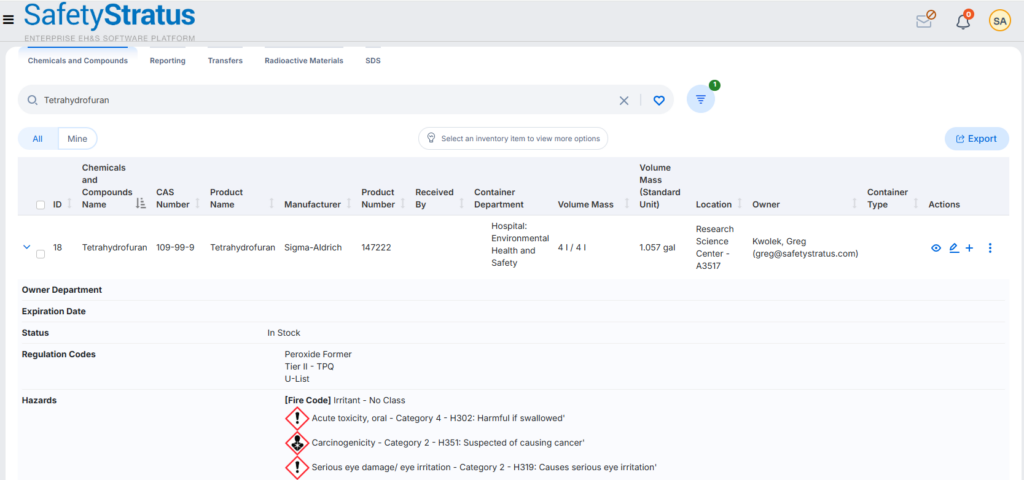Increasing the efficiency of your Chemical Management Program by moving from paper or spreadsheet inventories to a digital Chemical Management System is an important but sometimes difficult transition. Key factors in a successful transition are understanding what you need from a Chemical Management System and understanding the current state of chemical inventory tracking by your laboratory workers. This article will take you through things to consider for a successful transition.
1. Determine what you need
Transitioning from an asynchronous and manual system for chemical inventory management to a digital and automated process will allow for better tracking and hazard reporting. Before starting, consider your overarching goals with a digital Chemical Management System:
Simple:
- Tracking chemical name and CAS only
- Tracking chemicals by owner and location
- Ability to transfer chemicals between location
- Tracking chemical quantities and replacements
Advanced
- Hazard classification and reports
- SDS management
- Real-time monitoring of time-sensitive chemicals
- Generating location-specific hazard signage
Your chemical inventory management requirements will determine the type of system you need, the data quality, and the time spent managing the system.
2. Determine the current state
To determine how easy or difficult the transition will be, it is imperative to understand the current state of inventory management. Are users transitioning from electronic spreadsheets? Are users currently using paper copies? Are there users who are not tracking inventory at all? For example, if your users are tracking inventory sporadically on paper sheets, the information may be unreliable and out of date, forcing you to inventory the location prior to uploading into a digital system.
3. Selling the system to your users
Leading with empathy is the best way to influence laboratory workers to transition to a new Chemical Management System effectively. Laboratory workers are busy, they have a lot of competing interests, whether it be developing new research, teaching, or organizational responsibilities. They need to understand the value of the system beyond regulatory compliance.
Tell users what is in it for them:
- Eliminate the cost of ordering duplicate chemicals.
- Tracking locations of in-lab chemicals or chemicals on loan.
- At-a-glance hazard information for training.
- Digital tracking of time-sensitive compounds.
- Less burden compiling inventory reports for inspections.
Knowing where your users are at is key to a successful and frustration-free transition. Some users with advanced inventory tracking will take less time to transition to a Chemical Management System than users who have no staff and have not been tracking chemical inventory.
4. Organize the transition
Partner with your chosen electronic Chemical Inventory Management software provider to plan the smoothest transition into their system. Often there are options to import existing inventory or start fresh, so it’s best to understand the quality of the data you have.
Keys to a successful transition:
- Establish realistic deadlines with concrete deliverables. Make sure users know exactly what is due and when.
- Start small – choose the location with the highest quality data and organization to start with so you understand the process.
- Fine tune each roll out as you learn what works most efficiently for you and your chemical users.
- Provide user-specific training with opportunities for questions. Give users training recordings and a user manual to reference.
Transitioning from paper or asynchronous records to a digital management system is a big step, but the reward of proper organization and advanced reporting are worth the effort.

AUTHOR BIO:-

Jodi started her career as a chemist, spending more than 10 years in various synthetic organic research labs and publishing numerous articles during her undergraduate, graduate, and postdoctoral studies. In 2014, Jodi joined the Health and Safety team at the University of Minnesota, becoming their Chemical Hygiene Officer and ultimately, their Lab Safety Manager.
Jodi joined the SafetyStratus Team in December of 2023, leading their Customer Success Division. In her role with SafetyStratus, Jodi works with clients to improve the efficiency of their programs using technology and also provides technical chemical and lab safety program guidance.
